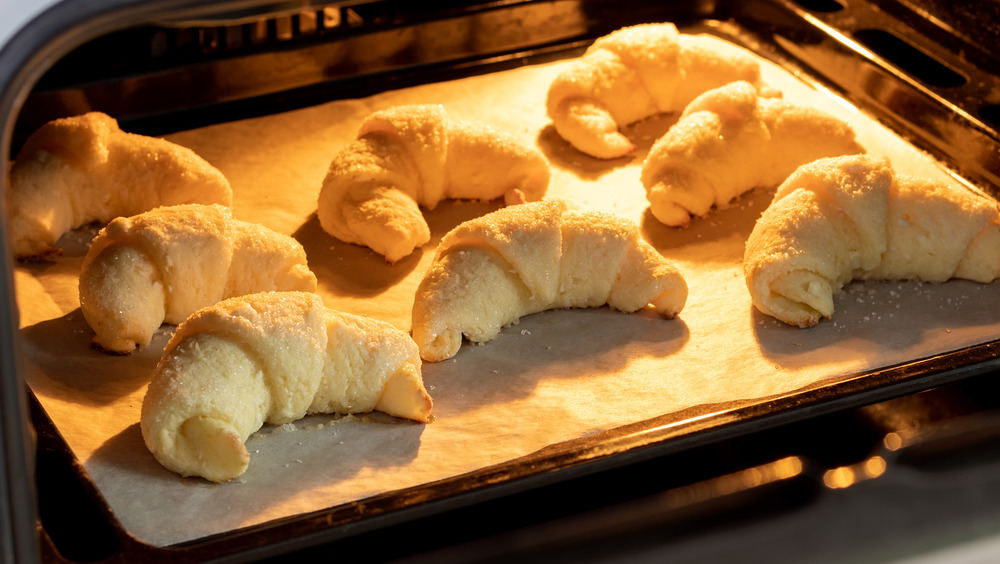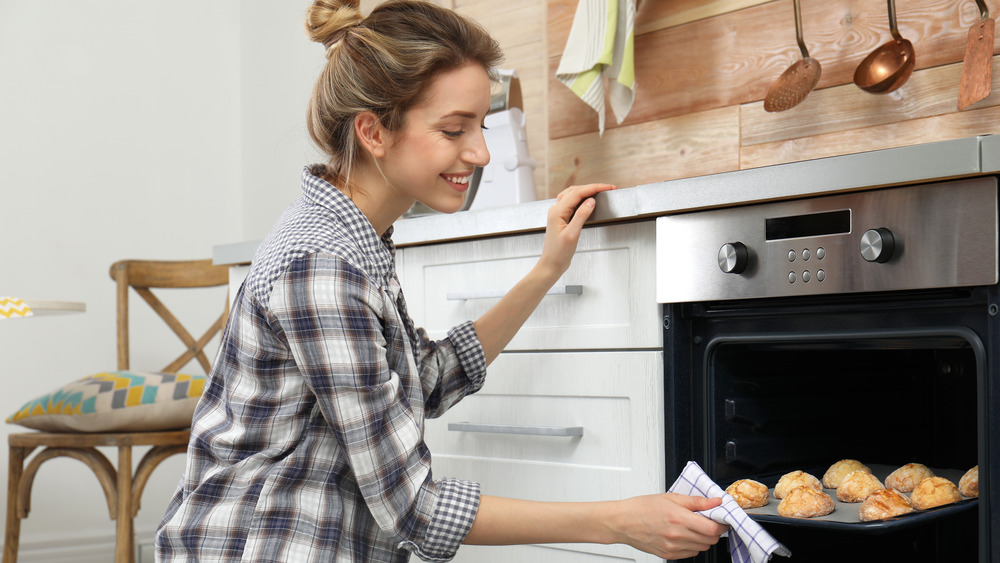The Biggest Mistake You're Making With Baking Sheets
Whether you're whipping up a batch of chocolate chip cookies or roasting some vegetables until they're perfectly caramelized, baking sheets are a staple item in every kitchen. However, there's one mistake that you may be making without even knowing it.
Courtney Cowan, founder of Milk Jar Cookies, explained to Insider that you need to lower your temperature by about 25 degrees Fahrenheit as well as decrease your bake time by approximately four minutes if you're using darker baking sheets.
Why? Well, a darker metal pan of any sort, whether a baking sheet or a cake pan, absorbs heat more efficiently and also spreads it more efficiently, according to Taste of Home. Whatever you're making will still end up just as tasty, but you will likely need to adjust your recipe a little when it comes to cook time and temperature, as Cowan recommends. Just think of a dark pan as adding a little extra fuel to the baking process.
The way a darker pan conducts heat can be a positive for some dishes. If you're looking to get some extra crisp for a particular dish — like a perfect batch of potato wedges — a dark pan can be a helpful tool (via Kitchn). When it comes to something like baking a cake, you may want to opt for a lighter pan to avoid burning the edges before the middle of your creation is cooked.
Hack your current baking sheets with one simple step
What if you only have one type of baking sheet? If you're looking to cook up crispy food or bake cookies with ever-so-slightly golden bottoms, you certainly don't need to rush out and buy all new equipment. There are a few tips that can help transform your dark baking sheets and make the process a little easier.
Cook's Illustrated did a comparison while baking a cake and found that, when lined with foil along the edges, a darker cake pan did just as well as a lighter pan in terms of creating a final product without overly browned edges. This means simply lining your pan with something could help counteract some of that browning action.
However, what you line your baking sheet with will also make a difference in whether your cookie bottoms are a perfect golden brown or, well, a little too well done. Aluminum foil is the go-to for many home bakers simply because it's convenient and available in most kitchens, but that shiny surface conducts heat as well (via Allrecipes).
If you're looking to have as much control as possible over the level of browning on the bottom of your baked goods, opt for parchment paper to line your baking sheet. It helps to regulate the temperature and neutralize any hot spots that your sheet might have, according to The Pioneer Woman.

